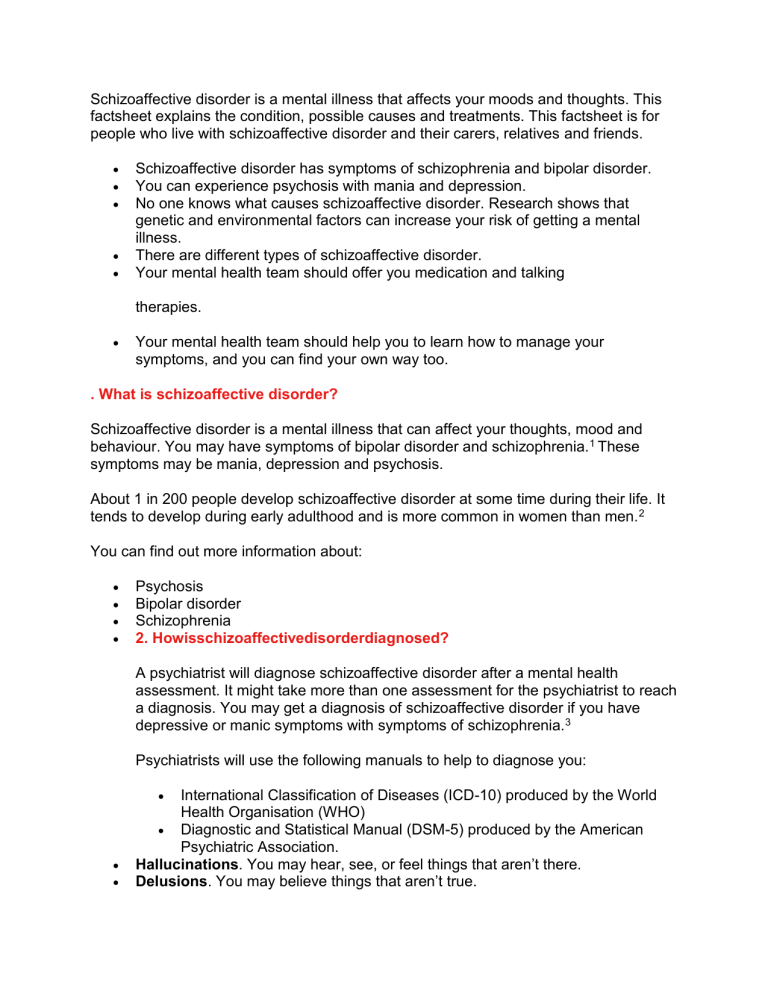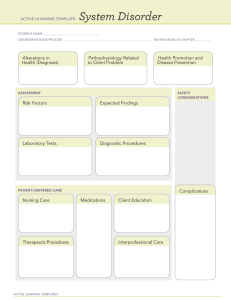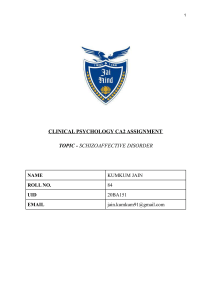
Schizoaffective disorder is a mental illness that affects your moods and thoughts. This factsheet explains the condition, possible causes and treatments. This factsheet is for people who live with schizoaffective disorder and their carers, relatives and friends. Schizoaffective disorder has symptoms of schizophrenia and bipolar disorder. You can experience psychosis with mania and depression. No one knows what causes schizoaffective disorder. Research shows that genetic and environmental factors can increase your risk of getting a mental illness. There are different types of schizoaffective disorder. Your mental health team should offer you medication and talking therapies. Your mental health team should help you to learn how to manage your symptoms, and you can find your own way too. . What is schizoaffective disorder? Schizoaffective disorder is a mental illness that can affect your thoughts, mood and behaviour. You may have symptoms of bipolar disorder and schizophrenia. 1 These symptoms may be mania, depression and psychosis. About 1 in 200 people develop schizoaffective disorder at some time during their life. It tends to develop during early adulthood and is more common in women than men. 2 You can find out more information about: Psychosis Bipolar disorder Schizophrenia 2. Howisschizoaffectivedisorderdiagnosed? A psychiatrist will diagnose schizoaffective disorder after a mental health assessment. It might take more than one assessment for the psychiatrist to reach a diagnosis. You may get a diagnosis of schizoaffective disorder if you have depressive or manic symptoms with symptoms of schizophrenia. 3 Psychiatrists will use the following manuals to help to diagnose you: International Classification of Diseases (ICD-10) produced by the World Health Organisation (WHO) Diagnostic and Statistical Manual (DSM-5) produced by the American Psychiatric Association. Hallucinations. You may hear, see, or feel things that aren’t there. Delusions. You may believe things that aren’t true. Disorganised speech. You may begin to talk quickly or slowly, and the things you say might not make sense to other people. You may switch topics without any obvious link. Disorganised behaviour. You might struggle to organise your life, or stick to appointments, for example. Catatonic behaviour. You may feel unable to move or appear to be in daze. Negative symptoms. These are symptoms that involve loss of ability and enjoyment in life. They can include the following things. 6 o Lack of motivation o Slow movement o Change in sleep patterns o o o o o o o Poor grooming or hygiene Difficulty in planning and setting goals Not saying much Changes in body language Lack of eye contact Reduced range of emotions Less interest in socialising or hobbies and activities o Low sex drive The manuals are guides which explain different mental health conditions and their symptoms. They also explain how long certain symptoms should last for before a diagnosis should be made. To get a diagnosis of schizoaffective disorder you symptoms should be clearly there for at least 2 weeks.4 . Your should have had a combination of symptoms of both psychosis and bi-polar disorder 2





